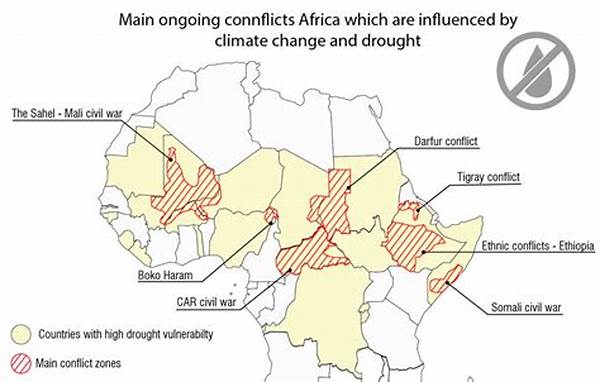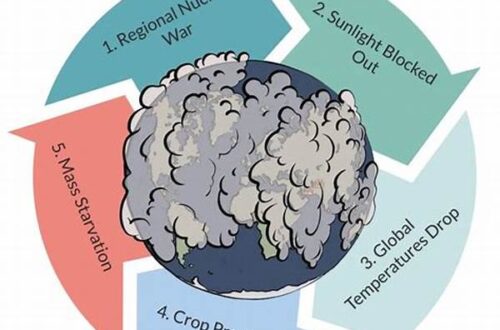Introduction
The environmental impact of conflict areas is a critical issue that demands attention from governments, environmental organizations, and international stakeholders. Conflict not only results in immediate human suffering but also inflicts long-term damage on ecosystems. War-torn regions often experience environmental degradation, and this degradation has profound implications for biodiversity, water resources, and agriculture.
The environmental impact of conflict areas is multifaceted. On one hand, conflicts can lead to the destruction of infrastructure such as factories, oil pipelines, and chemical plants. When these structures are compromised, pollutants such as oil and industrial chemicals can leach into the surrounding land and water bodies, causing soil contamination and water pollution. On the other hand, conflicts often force populations to migrate, leading to the over-exploitation of resources in relatively peaceful areas, further exacerbating environmental degradation.
Moreover, the environmental impact of conflict areas extends to a reduction in biodiversity. Warfare often leads to habitat destruction, either through direct military activities or through deliberate deforestation by combatants for tactical advantage. This, in turn, affects wildlife populations, some of which may already be endangered. The loss of biodiversity not only disrupts ecosystems but also undermines the capacity of local communities to depend on natural resources for survival, thus prolonging recovery post-conflict.
Direct Consequences of Warfare
1. The direct consequences of warfare significantly contribute to the environmental impact of conflict areas. Destruction of infrastructure releases pollutants into ecosystems, harming both human health and the environment.
2. Bombing and shelling often result in land degradation, contributing to soil erosion and loss of arable land, which in turn exacerbates food insecurity in conflict-affected regions.
3. The displacement of populations due to conflict leads to unsustainable resource use in neighboring areas, amplifying the environmental impact of conflict areas and stressing local ecosystems.
4. The environmental impact of conflict areas is evident in the scarce availability of clean water, as infrastructure necessary for water purification and sewage treatment is often compromised during conflicts.
5. Fragmentation of habitats is another dire consequence, as warfare creates barriers for wildlife, further threatening biodiversity and ecological balance within conflict zones.
Long-term Effects on Natural Resources
The environmental impact of conflict areas is not confined to immediate destruction but extends to long-term effects on natural resources. Prolonged conflicts often result in the over-extraction of natural resources as communities struggle to survive amidst chaos and scarcity. This over-extraction leads to the depletion of essential resources like forests, water, and fertile soil, which are crucial for both ecological health and human livelihoods.
In many conflict-affected regions, the competition for control over resources such as oil, minerals, and timber further heightens environmental degradation. Unsustainable extraction practices lead to deforestation and soil degradation, thereby reducing the land’s capacity to recover post-conflict. The environmental impact of conflict areas also includes the disruption of agricultural practices, as farmlands are often abandoned due to safety concerns, and when eventually reclaimed, are found to be less fertile.
Mitigation and Recovery Strategies
1. Developing comprehensive strategies for rehabilitation is vital to address the environmental impact of conflict areas, focusing on restoring ecosystems and infrastructure.
2. International collaboration is imperative for effective resource management, ensuring sustainable development practices to mitigate the environmental impact of conflict areas.
3. Reforestation projects can help restore biodiversity and soil quality, essential for offsetting the environmental impact of conflict areas and promoting ecological recovery.
4. Implementing pollution control measures is crucial to prevent further contamination of soil and water resources within conflict-affected zones.
5. Educating affected communities about sustainable practices is necessary to minimize adverse environmental impacts and promote long-term resilience.
6. Establishing protected areas can safeguard biodiversity and provide refuge for wildlife, helping to mitigate the environmental impact of conflict areas.
7. Technological innovations in agricultural practices can enhance food security while reducing stress on depleted ecosystems.
8. Integrating traditional ecological knowledge with modern environmental management can foster more effective recovery strategies.
9. Renewable energy initiatives can reduce dependence on conflict-related resources, mitigating the environmental impact of conflict areas.
10. Strengthening governance structures ensures accountability and coordinated efforts toward eco-sustainability post-conflict.
Socio-Economic Implications
The environmental impact of conflict areas transcends ecological boundaries and significantly influences socio-economic conditions. Prolonged environmental degradation hampers economic development, as communities reliant on agriculture and natural resources face diminishing returns. The destruction of infrastructure and loss of biodiversity disrupts livelihoods, forcing many to migrate in search of better opportunities, thus straining the social fabric of affected regions.
The economic cost of rebuilding and environmental rehabilitation is substantial, often requiring significant international aid and intervention. However, these efforts are frequently undermined by ongoing instability and lack of governance in post-conflict settings. Furthermore, the environmental impact of conflict areas includes increased health risks due to polluted water sources and inadequate sanitation, resulting in financial and logistical burdens on already fragile healthcare systems.
Environmental Justice and Policy Development
Addressing the environmental impact of conflict areas requires an emphasis on environmental justice and the development of robust policies. Ensuring that all stakeholders, including marginalized and indigenous communities, have a voice in environmental decision-making is critical. International legal frameworks play a pivotal role by holding parties accountable for ecological violations and facilitating fair resource distribution among affected populations.
Policymakers must prioritize sustainable development goals that integrate environmental considerations into peacebuilding processes. This includes leveraging innovations in technology and science to monitor and mitigate the environmental impact of conflict areas, ensuring that recovery efforts are effective and inclusive. Collaborative efforts between governments, NGOs, and the private sector are essential in developing adaptive strategies that address both environmental and social dimensions of sustainability.
Conclusion
In summary, the environmental impact of conflict areas profoundly affects both ecosystems and human populations. Through direct destruction and long-term resource depletion, conflict exacerbates environmental degradation, leading to a vicious cycle of socio-economic challenges. Addressing the environmental impact of conflict areas requires comprehensive strategies encompassing recovery, sustainable practices, and international cooperation.
There is an urgent need to integrate environmental sustainability into conflict resolution and peacebuilding efforts. Mitigation strategies, such as reforestation and renewable energy adoption, play a crucial role in reversing the damage caused. Through concerted efforts from all sectors, it is possible to implement effective measures that ensure ecological recovery and foster resilience in conflict-affected regions, thereby securing a sustainable future for generations to come.





